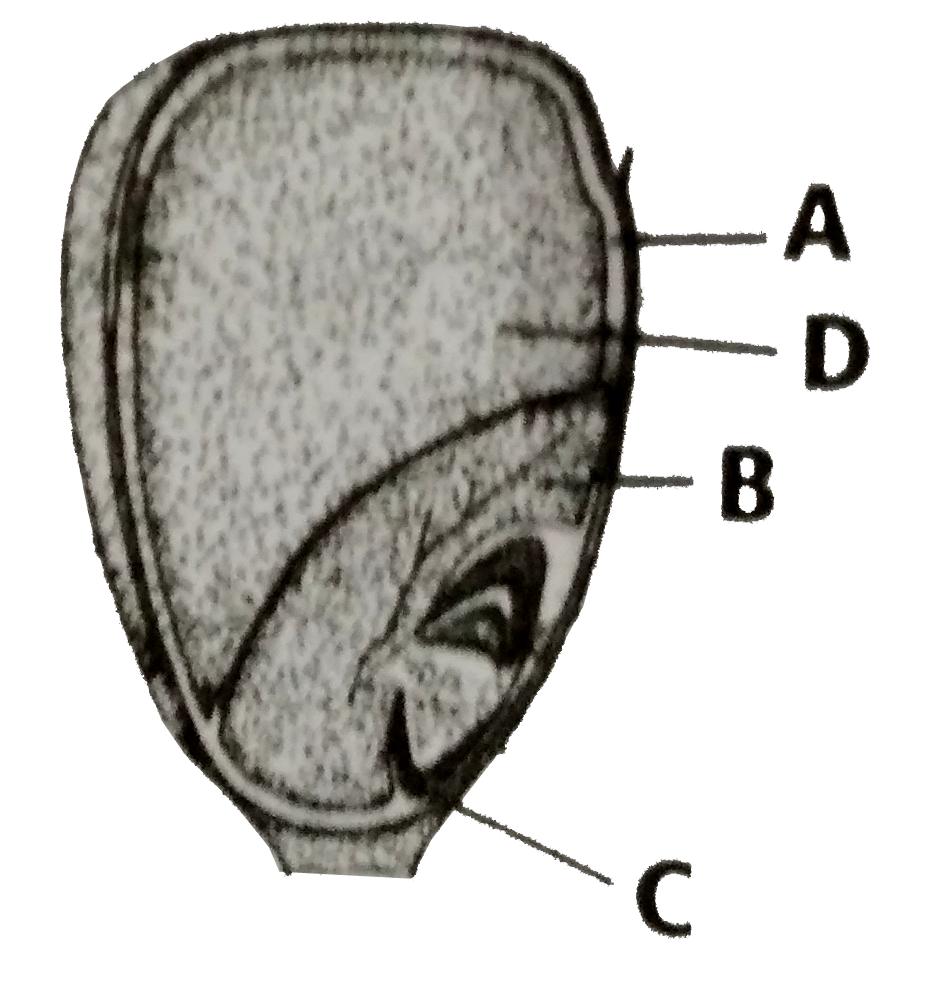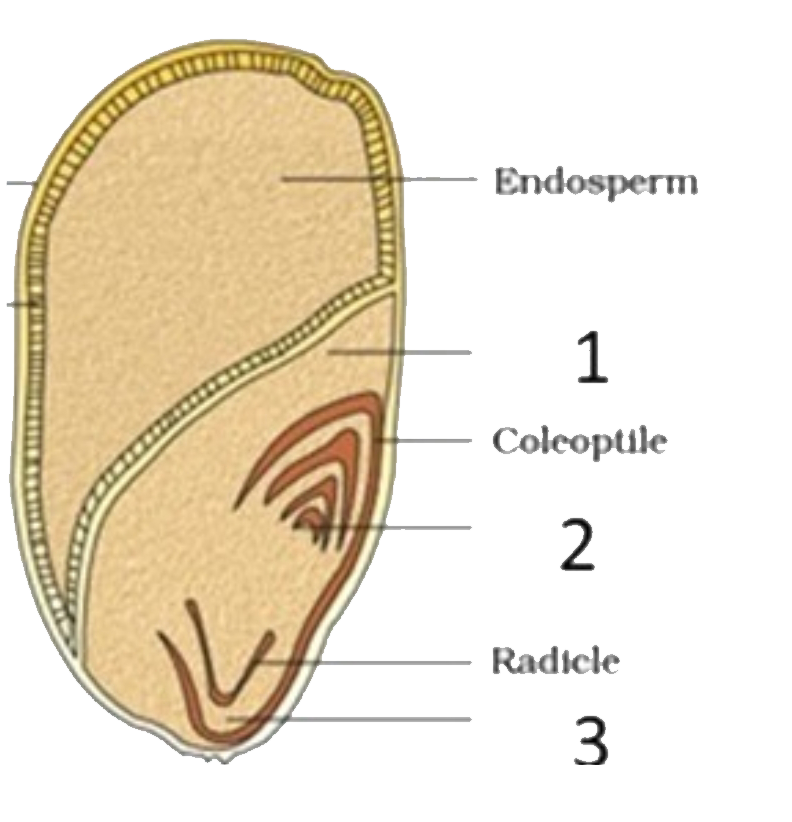Shield-shaped cotyledon/scutellum occurs in
Maize/sorghum
Gram
Pea
Cucumber
The correct Answer is:A
To determine where the shield-shaped cotyledon or scutellum occurs, follow these steps:
Step 1: Understand Cotyledons
Cotyledons are the first leaves that appear from a seed during germination. They play a crucial role in providing nutrients to the developing plant.
Hint: Remember that cotyledons can be classified into two types: monocots and dicots.
Step 2: Identify the Types of Cotyledons
There are two main types of cotyledons:
- Monocotyledons (monocots): These have one cotyledon.
- Dicotyledons (dicots): These have two cotyledons.
Hint: Think about the number of cotyledons when classifying plants as monocots or dicots.
Step 3: Recognize the Shape of Cotyledons
In monocots, the cotyledon is often shield-shaped and is referred to as a scutellum. This shape is distinctive and helps in identifying monocots.
Hint: The term "scutellum" is key to identifying the type of cotyledon.
Step 4: Analyze the Options
Given the options:
1. Major sorghum (monocot)
2. Gram (dicot)
3. Pea (dicot)
4. Cucumber (dicot)
From these options, only major sorghum is a monocot, which means it has the shield-shaped cotyledon or scutellum.
Hint: Eliminate the options that are known to be dicots.
Step 5: Conclusion
The shield-shaped cotyledon or scutellum occurs in major sorghum.
Final Answer: Major sorghum.
Cotyledons are the first leaves that appear from a seed during germination. They play a crucial role in providing nutrients to the developing plant.
There are two main types of cotyledons:
- Monocotyledons (monocots): These have one cotyledon.
- Dicotyledons (dicots): These have two cotyledons.
In monocots, the cotyledon is often shield-shaped and is referred to as a scutellum. This shape is distinctive and helps in identifying monocots.
Given the options:
1. Major sorghum (monocot)
2. Gram (dicot)
3. Pea (dicot)
4. Cucumber (dicot)
The shield-shaped cotyledon or scutellum occurs in major sorghum.
Topper's Solved these Questions
- MORPHOLOGY OF FLOWERING PLANTS BOOK - CENGAGE BIOLOGY ENGLISHCHAPTER - MORPHOLOGY OF FLOWERING PLANTS EXERCISE - Assertion and Reason
11 Videos
- MORPHOLOGY OF FLOWERING PLANTS BOOK - CENGAGE BIOLOGY ENGLISHCHAPTER - MORPHOLOGY OF FLOWERING PLANTS EXERCISE - Archives
41 Videos
- MINERAL NUTRITIONBOOK - CENGAGE BIOLOGY ENGLISHCHAPTER - MINERAL NUTRITIONEXERCISE - ARCHIVES
39 Videos
- NEET 2017 PAPERBOOK - CENGAGE BIOLOGY ENGLISHCHAPTER - NEET 2017 PAPEREXERCISE - MCQ
45 Videos
Similar Questions
Knowledge Check
Scutellum is :
Aa protective covering of the radicleBa protective covering of the plumuleCan endospermDa shield-shaped cotyledoIn the given figure of maize grain certain regions are labelled as A,B,C and D.Match them with the codes (1,2,3 and 4) given below and select the correct option
(1)The main nutritive tissue ltbr (2) Shield shaped cotyledon
(3)Protection sheath of radicle
(4) The proteinaceous layer
 AA-(1), B-(3), C-(4), D-(2)BA-(2), B-(3), C-(1), D-(4)CA-(1), B-(2), C-(3), D-(4)DA-(4), B-(2), C-(3), D-(1)
AA-(1), B-(3), C-(4), D-(2)BA-(2), B-(3), C-(1), D-(4)CA-(1), B-(2), C-(3), D-(4)DA-(4), B-(2), C-(3), D-(1)
Read the following statements and mark them as True (T) or False a.coconut water from tender coconut has thousands of free nuclei. b.Both endosperm and perisperm are similar in ploidy level and their origin. c.Single large shield shaped cotyledon of wheat embryo is known as epiblast
View SolutionScutellum is part of
View SolutionSome seeds have no cotyledons.
View SolutionObserve the diagram given below.

Which of the following describes the parts labeled as 1,2 and 3 correctly ?
i. It represents the plumule which further develops into the shoot .
ii. Large shield shaped cotyledon.
iii. Further develops into the primary root.
View SolutionKidney-shaped nucleus occurs in
View SolutionThe monocotyledonous seed (wheat grain) consists of one large and shield shaped cotyledon known as
View Solution
